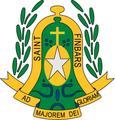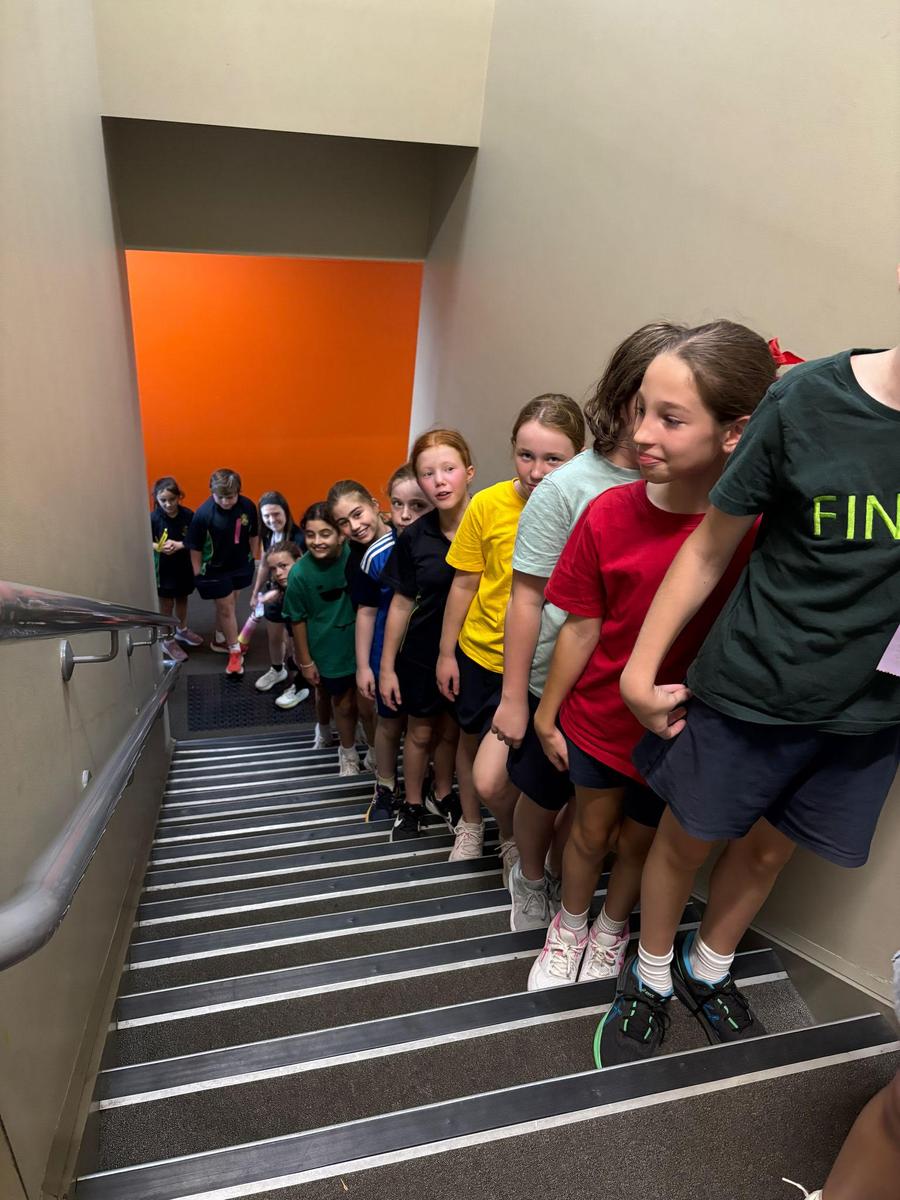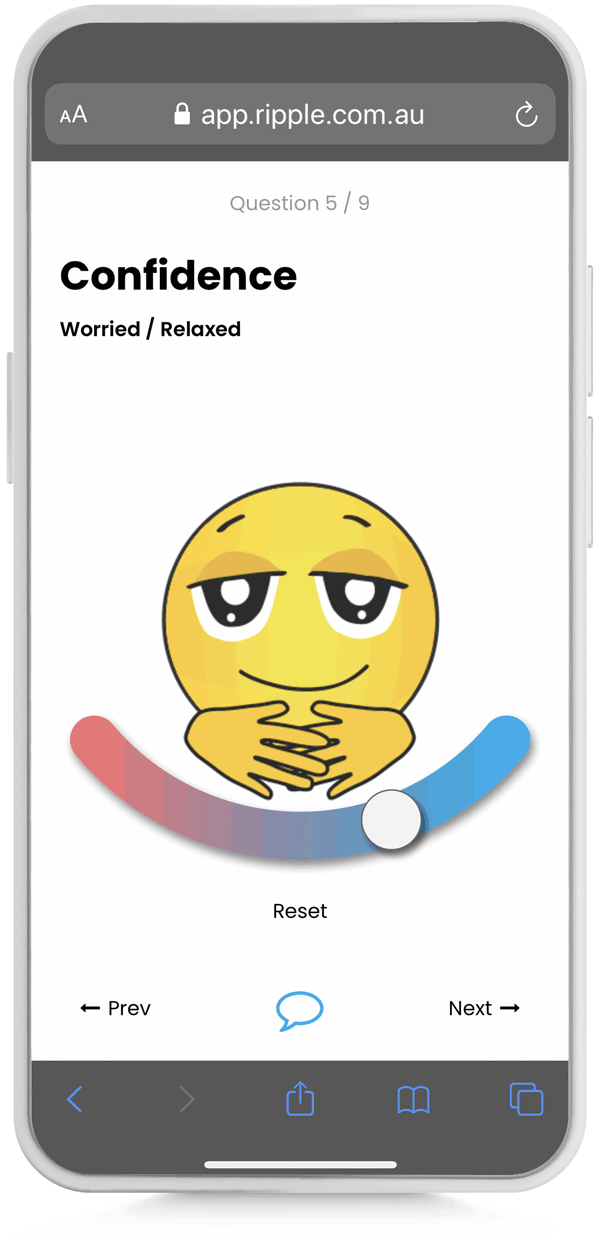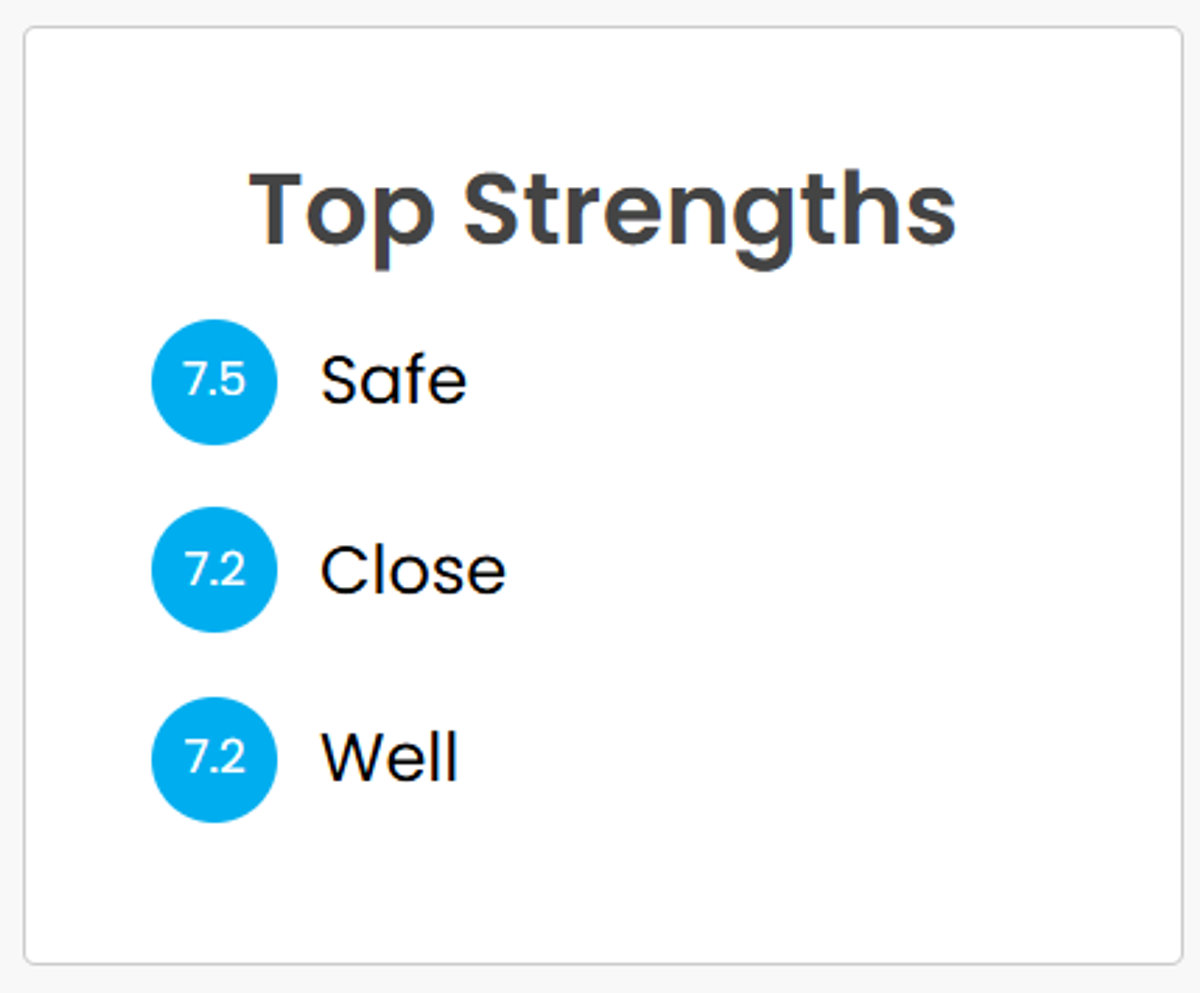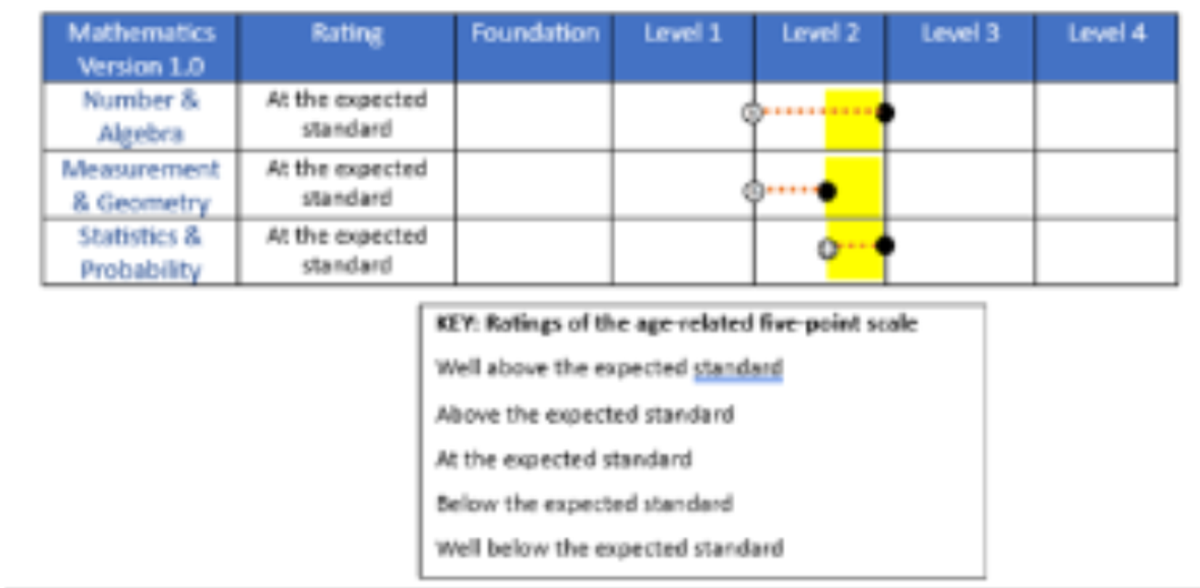Deputy Principal's Report
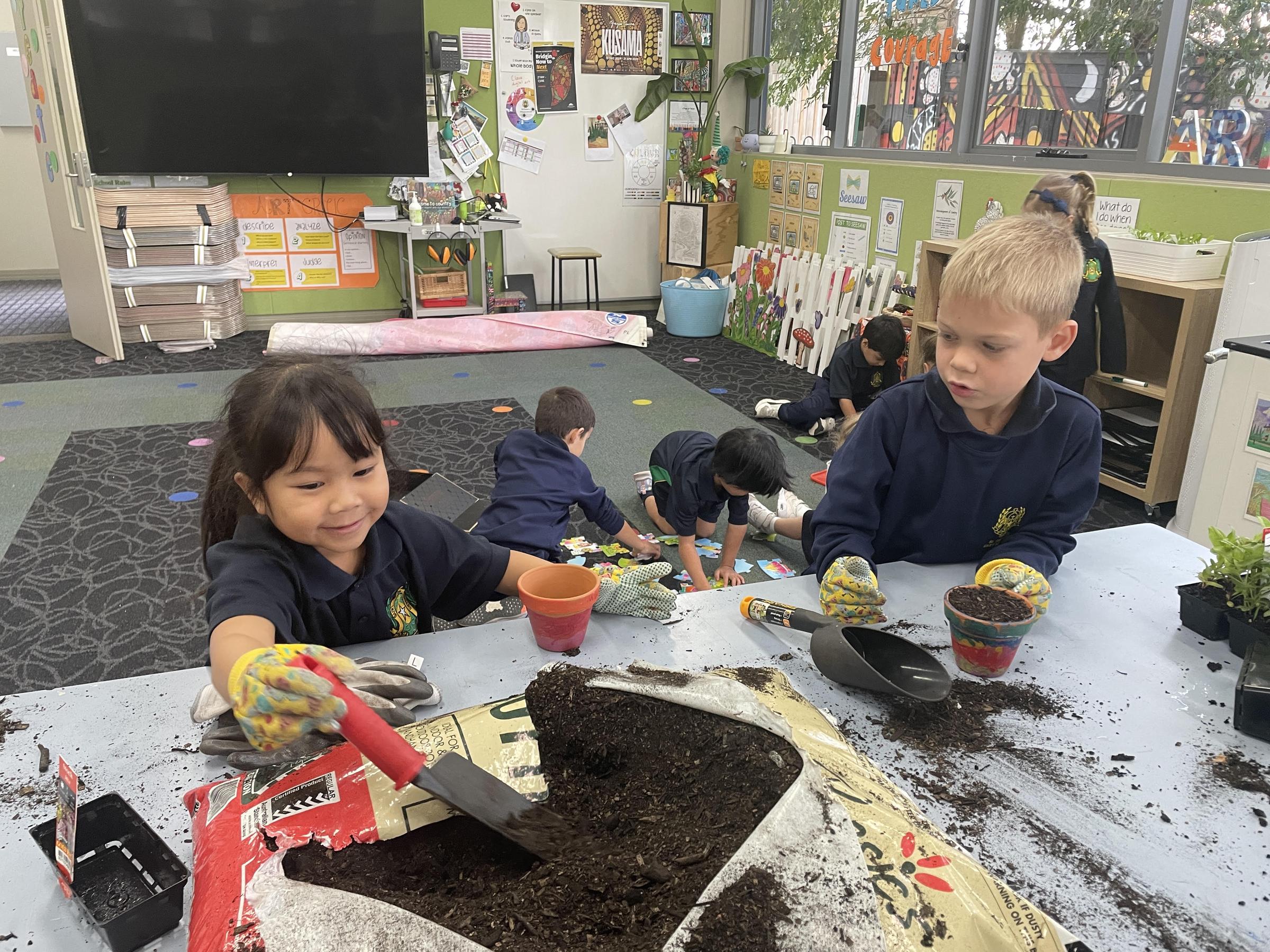
Hello!
As we move into Week 4 of Term 2, we continue to work on our school values of being safe, respectful and resilient members of the St. Finbar's community. This term, we are placing a whole-school focus on moving safely throughout our corridors by keeping to the left and walking. We are also practicing lining up safely after lunch and snack to help transition into our learning environments calmly. You can see how each class is going from the school sticker chart up on the board near the office. These small actions help create a calm, safe and respectful environment for everyone.
Student Wellbeing
At St. Finbar's, the wellbeing of our students, staff, and families is at the heart of everything we do. We understand that wellbeing exists on a continuum and can change throughout the week and year, which is why we take a proactive approach to support the needs of our community. When students feel safe, supported, and valued, they are better able to learn, grow, and thrive. Through daily check-ins, explicit lessons, and a safe learning environment, we prioritise the social and emotional development of every child.
Ripple
All students from Years 2-6 use ripple as a 5 minute morning check-in tool. This digital platform encourages self-awareness and emotional literacy by prompting students to reflect on how they’re feeling and why. Students complete these check ins at least 3 mornings a week however many classes complete it every morning. Students record how they are feeling throughout the week on a scale of emojis (pictured to the right).
This feedback is instantly recorded and can accessed by teachers to identify those who may need extra support, and foster meaningful conversations.
Currently, our students’ Ripple check-in results highlight some wonderful strengths within our school community. The data cuurently shows that the majority of our students feel safe at school, have strong connections with their peers, and report feeling generally well. This reflects the environment we work hard to create at St. Finbar’s. Students are showing that they value the relationships they have with each other and with their teachers, and they feel a strong sense of belonging within our school.
A significant number of students have reported coming to school feeling tired, hungry, and as a result, finding it difficult to concentrate in the morning. This insight is valuable and helps us better understand how to support our learners of a morning. We encourage families to partner with us in supporting healthy sleep routines and a nutritious breakfast to help set students up for success each day.
Semester 1 Reports
*Please see below a repeated message from previous Newsletters regarding the changes to Mathematics Reporting in 2025*
Semester One Reports & Victorian Curriculum - Mathematics 2.0
In the coming weeks, you will be reminded of how to access your child’s 2025 Semester One Report through the nForma Portal.
For existing families who successfully accessed the portal in 2025, there should be no action required - passwords will not be reset this year - you should be able to access the portal with the credentials you used last year.
For new families and families who had difficulties with accessing the portal, there will be instructions included in the next edition of the school newsletter.
If you have any concerns regarding the nForma portal, please contact me (cmills@sfbrightoneast.catholic.edu.au).
As you may be aware, in 2025 Victorian Schools are mandated to teach and assess Mathematics according to the Victorian Curriculum - Mathematics 2.0 for all students.
Some key changes to the curriculum are:
- There are no longer 3 strands
- Number & Algebra
- Measurement & Geometry
- Statistics & Probability
- There are now 6 strands
- Number
- Algebra
- Measurement
- Space
- Statistics
- Probability (commencing in Year 3)
Reporting to the Curriculum
There has been a significant change in the way reporting will look in accordance with Mathematics VC 2.0 - students will no longer receive a progression point for each strand of Mathematics. In previous years your child’s report will have looked similar to the example below:
As of Semester One 2025, teachers are mandated to give one aggregated progression point for Mathematics which is reflective of the child’s understanding of all 6 strands in Years 3-6 and 5 strands in Year P-2 (not including probability). This will appear on the report in a similar way to the image below:
It is important to note that for Semester One 2025, there will be no indicator of the previous score for Mathematics from the Semester Two, 2024 student report.
Nationally Consistent Collection of Data (NCCD) On School Students with Disability
What is the Nationally Consistent Collection of Data?
Schools must now complete the Nationally Consistent Collection of Data on School Students with Disability (NCCD) every year. It counts the number of students who receive additional adjustments or “help” at school because of a disability. The NCCD helps governments plan for the needs of students with disabilities.
Who is counted in the data collection?
To count a student in the NCCD, schools must think through some key questions:
1. Is the student getting help at school so that they can take part in education on the same basis as other students?
2. Is the help given because of a disability? The word ‘disability’ comes from the Disability Discrimination Act 1992 (DDA) and it can include many students.
3. Has the school talked to you or your child about the help that they provide?
4. Has the school kept records about the help they provide, the student needs and the reasons that the student needs this help?
The school will need to keep copies of tests, student work, assessments, records of meetings, medical reports or other paperwork and information about how the student’s learning is moving along over time.
Once the school decides that the student should be counted in the NCCD, they then choose a disability group and one of four levels of help that has been given to the student.
What does the word ‘disability’ mean in the NCCD?
In the NCCD the word ‘disability’ comes from the Disability Discrimination Act 1992 (DDA). There are four types of disability that the school can choose from: sensory, cognitive, social-emotional and physical.
Many students that need help at school can be counted in the NCCD. For example, students with learning problems, e.g. specific learning disability or reading difficulty (sometimes called dyslexia), health problems (e.g. epilepsy or diabetes), physical disability (e.g. cerebral palsy), vision/hearing loss and social-emotional problems (e.g. selective mutism, Autism Spectrum Disorder, anxiety).
Letters from doctors or specialists can be very helpful for schools as they plan how to support students with their learning. Schools do not need to have these letters before they can count a student in NCCD. Teachers can use all that they know about the student’s learning and the records that they have collected over time to decide if a student can be counted in the NCCD.
What sort of help does the school give students?
Students need different types of help at school. Some students need a little help sometimes while other students need a lot of help nearly all the time. The type of help given depends on the needs of the student. The help can include changes to the school buildings or grounds (e.g. ramps or things like special desks or chairs), extra teacher help in classes, special learning programs, changes to the work they give the student or extra adult help.
How will the NCCD be different this year?
All schools have been counting students in the NCCD since 2015. The government will use the NCCD data as part of the funding to schools.
What will the school need to know about my child for the NCCD? Schools work together with families to understand the needs of each child. It is helpful if families give their child’s teacher a copy of any letters or reports they have. The letters or reports will help the school understand the child and the help that they might need. Letters from doctors, psychologists, speech pathologists, doctors, and occupational therapists etc. can be very helpful for schools. These reports along with information that the teacher has (i.e. school based tests, your child’s work and learning plans) helps the school to understand and meet your child’s needs.
What happens to the NCCD data? Who will have the NCCD information?
Each school principal must check the NCCD data in August of each year. The school will give the information to the Catholic Education Office. The school will work with the Catholic Education Office to make sure that the NCCD data is OK before they give the data to the government. The government will not be given the names of any students or any letters or records. Please ask your school for their privacy policy if you need to know more.
Does the school need me to agree with them about counting my child in the NCCD?
Amendments were made to the Australian Education Act 2013 and Australian Education Regulation 2013). Schools do not need you to agree to let them count a child in the NCCD. You cannot ask the school not to count your child.
Where can I find out more?
Please contact your child’s school if you have further questions about the NCCD.
Have a great week - May God Bless
Laura and Callum
Deputy Principals
